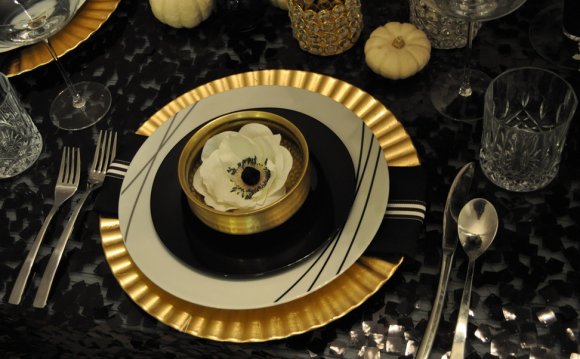
Does the color of your plate affect how much you eat? A new study by Dr. Brian Wansink and Dr. Koert van Ittersum indicates that it does - or more specifically that the color contrast between food and plate creates an optical illusion known as the Delboeuf illusion, after the Belgian scientist who discovered it in 1865 that induces you to take more than you realize. According to Delboeuf's findings, when one looks at concentric circles, the perceived size of the interior circle changes when the circumference of the outer circle is altered: as the outer circle becomes larger, the perception is that the inner circle becomes smaller. But, you might be wondering how can this relate to portion size and plate color?
Continuing with their previous research on this topic published in 2006 and reported in 'the Large Plate Mistake!' in this section, Wansink and van Ittersum recently conducted a series of experiments to investigate other possible effects of the illusion on food serving behavior. In these new experiments they explored the effect of the color contrast between the plate and the food, and between the dinnerware and the background (i.e. tablecloth), the combined effect of plate size and color contrast between food and plate, and the effect of attention, or mindfulness, and education on the Delboeuf illusion.
To test the color contrast effect, Wansink and van Ittersum set up a study during a college reunion in upstate New York. Sixty party attendees were split up and directed to buffets serving pasta with either tomato or Alfredo sauce. In line they were randomly handed either red or white plates. After serving themselves, their portion sizes were weighed using hidden scales. What did the researchers find this time around? The results confirmed their hypothesis: participants who had low contrast between their food and the plates they served themselves on, for example pasta with Alfredo sauce on a white plate or pasta with tomato sauce on a red plate, served themselves 30% - or 42 grams more pasta than participants with high contrast between their food and the plate they served themselves on (i.e. pasta with tomato sauce on a white plate or pasta with Alfredo sauce on a red plate). Imagine what a difference like that can make on our waistlines, when repeated over time! Interestingly enough Wansink and van Ittersum also found that reducing the color-contrast between the dinnerware and its background (i.e. table, tablecloth or placemat) helps reduce over-serving by as much as 10%.









